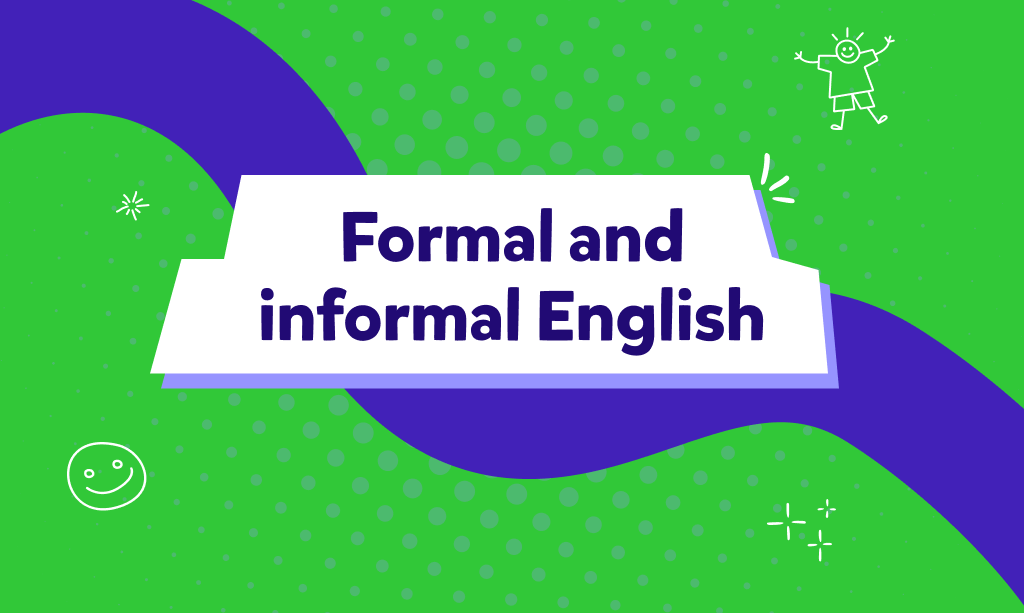Do you speak the same way with your teacher as you do with your best friend? Probably not—and that’s totally normal! In English, we have two different ways of speaking and writing: formal and informal. Learning to differentiate between formal and informal English helps you know when to use the right words in the right place.
In this article, we’ll show you how to tell the difference between formal and informal English, when to use each one, and give you tips to make your English sound just right. We’ll even help you answer questions like “Which of the following sentences effectively uses formal language?” so you’ll be ready for school, tests, or everyday life.

Formal vs. Informal English
Formal English is used in school, at work, or when talking to someone you don’t know very well. It’s polite, careful, and sometimes uses longer words. Informal speech is more relaxed. You use it when texting friends, at home, or playing with others. It’s fun and friendly, and often includes slang forms. You’ll see lots of informal language examples like “gonna” or “wanna” when people just talk casually.
Let’s look at an example.
“Would you like to join us for dinner?” – This is a formal expression.
“Hey, wanna come eat with us?” – This is informal language.
Can you guess which sentence is an example of formal language? Great job if you picked the first one!
What Is Formal English?
To begin, let’s talk more about the differences between formal and informal English. Formal English is the kind of English we use when we want to sound polite, respectful, and professional. Formal expressions are used in schools, business meetings, job interviews, academic writing, and speeches. This type of English helps people take what you’re saying seriously.
The tone in formal English is more serious and careful. You won’t hear slang or short forms like “gonna” or “wanna.” Instead, you use full words and polite expressions. For example, instead of saying, “Can I get some help?”, you might say, “I would like to request some assistance.” That’s a formal expression!
When you use formal English, you show that you respect the person you’re talking to, especially if they’re a teacher, boss, or someone important. It’s like putting on your best clothes—but with words!
What Is Informal English?
Informal English is how we speak when we’re just relaxing or having fun with people we know well. It’s casual and friendly, like the way you talk to your friends, family, or classmates. You’ll hear it all the time in texting, social media, and everyday conversations.
The tone in informal English is more personal and playful. People use contractions like “I’m” instead of “I am,” slang like “cool” or “yep,” and even emojis or silly words when texting. Instead of saying, “I am going to leave now,” you might say, “I’m gonna head out.” That’s informal speech! Informal English helps you sound natural and fun, but it’s important to know when to use it.
Key Differences: Formal vs. Informal English
Now that we know the differences between formal and informal English, let’s explore how they actually sound in real life.
Informal Language Examples
Informal language examples include casual phrases like “gonna,” “wanna,” or “what’s up?” You’ll often see emojis, shortened words, or abbreviations like LOL (laugh out loud) or BRB (be right back) in texts. A quick example of a casual chat might be: “Hey! Wanna hang out later?” This kind of talk is great for everyday conversations with friends or family.
Formal Expressions and When to Use Them
Formal expressions are more polite and serious. You’ll hear or read words like “furthermore,” “kindly be advised,” or “please accept my apologies.” These are often used in settings like job interviews, resumes, or emails. For example, in a cover letter, you might write: “I would like to express my interest in the position.”
To practice, try reading different sentences and asking, “Which sentence is an example of formal language?” This helps train your brain to recognize the difference and choose the right tone for every situation.
When to Switch Between the Two
Knowing when to switch between formal and informal English is just as important as knowing the difference. Think about who you’re talking to. Would you speak to your teacher the same way you talk to your best friend? Probably not. We adjust our language to match the situation and the person.
If you’re talking to a friend, it’s totally okay to use informal speech like “Hey! What’s up?” But if you’re writing an email to your teacher, it’s better to use formal expressions like “Good afternoon” or “I would like to ask a question.”
For ESL learners, it’s normal to feel unsure at first. A good tip is to practice both styles and think about the setting. If it’s for school, work, or something serious—go formal. If it’s fun, casual, or personal—go informal.
In sum, you now know how to tell the difference between formal and informal English, when to use each one, and how to switch. No matter what, remember that choosing the right tone can help you sound clearer, confident, and respectful.
But don’t worry if it still feels tricky—practice makes it easier. At Novakid, you can book a trial lesson to join fun and helpful sessions where you’ll learn how to speak in both formal and informal ways. You’ll get to ask questions, try example sentences, and feel more confident every day!





































